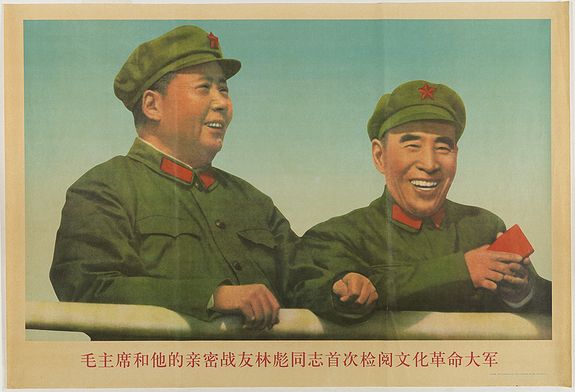The Art of Chinese Propaganda Posters

Propaganda posters can leave a lasting impact. Shaomin Li, the Chinese artist, economist, and dissident, finds these ideas particularly meaningful.
He grew up during the Cultural Revolution, surrounded by the posters he now collects. Li also had to create them as a soldier in the People’s Liberation Army.
Some of his collection was on display in an exhibition at the Chrysler Museum of Art in Norfolk, Virginia.
"For my generation, our education was pretty much Mao’s revolutionary class struggle ideology, which was propagated by the posters, says Li, in an email interview.
It has left such a strong indelible imprint on us that many of us may still subconsciously follow Mao’s tactic in our lives. For example, many contemporary business leaders in
China attribute their business success to Mao’s thoughts.
Li grew up during the Cultural Revolution, 10 years of destruction and upheaval in China. It was launched by Mao Zhedong in 1966 to reassert his rule and galvanize the Communist revolution, with a devastating impact. The death toll is usually estimated at one million, although one study suggested it could be as high as eight million.
It also encouraged eradicating the "Four Olds" - old "things, ideas, customs, and habits" through which classical literature, art, and architecture were damaged or destroyed.
The widest possible range of emotions is conveyed, from sweet sentimentality to brutal aggression.
The country shown on the posters is an imagined China, the China of the Communist Party's propaganda.
Production of propaganda posters lasted in China for more than half a century. Since the proclamation of the People's Republic of China in 1949, tens of thousands of different posters have been
produced and printed in billions of copies. Nowadays, however, these posters have become very rare.
The People's Fine Arts Publishing House
is a national press specializing in fine arts. It was established in Beijing in September 1951 and published various excellent Chinese works and treatises of fine arts, sorts out and publishes ethnic, artistic heritage, as well as publishes and introduces foreign works and relevant treatises of fine arts that are valuable in research and for reference.
Its publications include: various albums and treatises of fine arts and photographs, textbooks of fine arts and books on practical skills, comic strips, New Year paintings, posters,
periodicals of fine arts and art series. In the past 40 years, it has published nearly ten thousand titles of books, pictures, and journals.
Since 1987, it has published about 400 titles yearly, among which new editions account for more than two-thirds. Many of its publications have been highly praised by the artistic circle at home and abroad and have been welcomed by numerous readers.
Since 1981, the People's Fine Arts Publishing House has carried out publishing cooperation with countries like Japan, France, England, Belgium, the former Soviet Union and Australia.
By 1988, more than 20 titles had been jointly published.
Useful reading :
Tasschen - Chinese propaganda posters.
Landsberger, Van der Heijden, Shen - Chinese Posters.
The largest collection in the West is kept in Amsterdam.